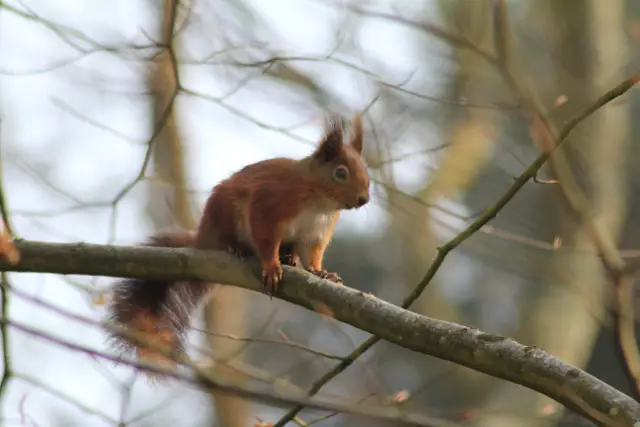This in from Hampshire and Isle of Wight Wildlife Trust. Ed
Since the 1950s the native red squirrel population in the UK has been declining rapidly due to the competition from the more robust non-native grey squirrel. On the mainland, grey squirrels tend to live in larger colonies that dominate food resources making it more difficult for the red squirrel to survive.
The grey squirrel also carries the deadly squirrel pox virus which they are immune to but can devastate red squirrel populations.
Radiant redheads can thrive
On the Isle of Wight we are lucky enough not to have any grey squirrels as the Solent acts as a deterrent meaning that the grey squirrels cannot access the Island. This means that the Island is one of the only places in the country where these radiant redheads can thrive. This gives those on the Island a bigger opportunity for sightings.
Fortunately, as a result of a successful litter, this year baby squirrels are in abundance and can be seen running around Bouldnor Forest on a daily basis.
Kathy Grogan, Education Officer at Hampshire & Isle of Wight Wildlife Trust gave some tips on how to spot the creatures:
“Red squirrels are present in all Isle of Wight woodlands which have been granted access to survey. They also come into gardens to access food put out for birds. The best time to spot them is early in the morning and dusk.”
Special event for tots
The trust will be celebrating Red Squirrel week on Thursday 2 October by hosting a special Wildlife Tots session at Bouldnor Forest.
This squirrel themed day will feature games and activities for the under 5s. The emphasis is on family learning and all children must be accompanied by an adult.
For details and to book your place, please call Kathy Grogan, Education Officer, on 01983 760018. Bouldnor Forest, Yarmouth, Isle of Wight, PO41 0AB




